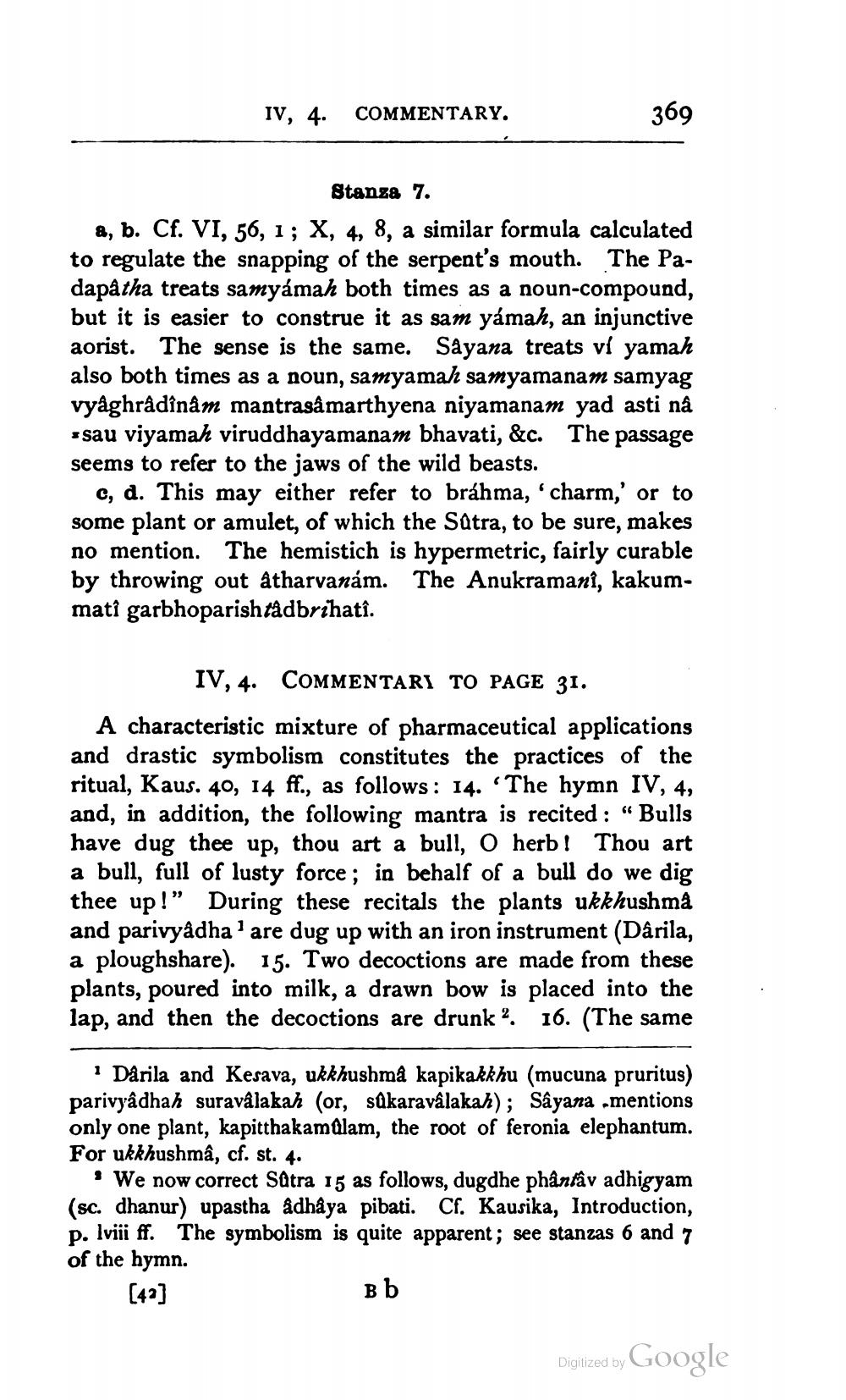________________
IV, 4. COMMENTARY.
369
Stanza 7. a, b. Cf. VI, 56, 1; X, 4, 8, a similar formula calculated to regulate the snapping of the serpent's mouth. The Padapatha treats samyámah both times as a noun-compound, but it is easier to construe it as sam yamah, an injunctive aorist. The sense is the same. Såyana treats vi yamah also both times as a noun, samyamah samyamanam samyag vyaghràdînâm mantrasamarthyena niyamanam yad asti na ssau viyamah viruddhayamanam bhavati, &c. The passage seems to refer to the jaws of the wild beasts.
c, d. This may either refer to brahma, 'charm,' or to some plant or amulet, of which the Satra, to be sure, makes no mention. The hemistich is hypermetric, fairly curable by throwing out atharvanám. The Anukramani, kakummati garbhoparish tadbrihatî.
IV, 4. COMMENTARI TO PAGE 31. A characteristic mixture of pharmaceutical applications and drastic symbolism constitutes the practices of the ritual, Kaus. 40, 14 ff., as follows: 14. "The hymn IV, 4, and, in addition, the following mantra is recited : " Bulls have dug thee up, thou art a bull, o herb! Thou art a bull, full of lusty force; in behalf of a bull do we dig thee up!” During these recitals the plants ukkhushma and parivyâdha'are dug up with an iron instrument (Darila, a ploughshare). 15. Two decoctions are made from these plants, poured into milk, a drawn bow is placed into the lap, and then the decoctions are drunk 2. 16. (The same
"Darila and Kesava, ukkhushmå kapikakkhu (mucuna pruritus) parivyâdhah suravalakah (or, sükaravalakal); Sâyana „mentions only one plant, kapitthakam Alam, the root of feronia elephantum. For ukkhushmâ, cf. st. 4.
• We now correct Sätra 15 as follows, dugdhe phântâv adhigyam (sc. dhanur) upastha adhảya pibati. Cf. Kausika, Introduction, p. lviii ff. The symbolism is quite apparent; see stanzas 6 and 7 of the hymn.
[47]
Bb
Digized by Google
Digitized by




